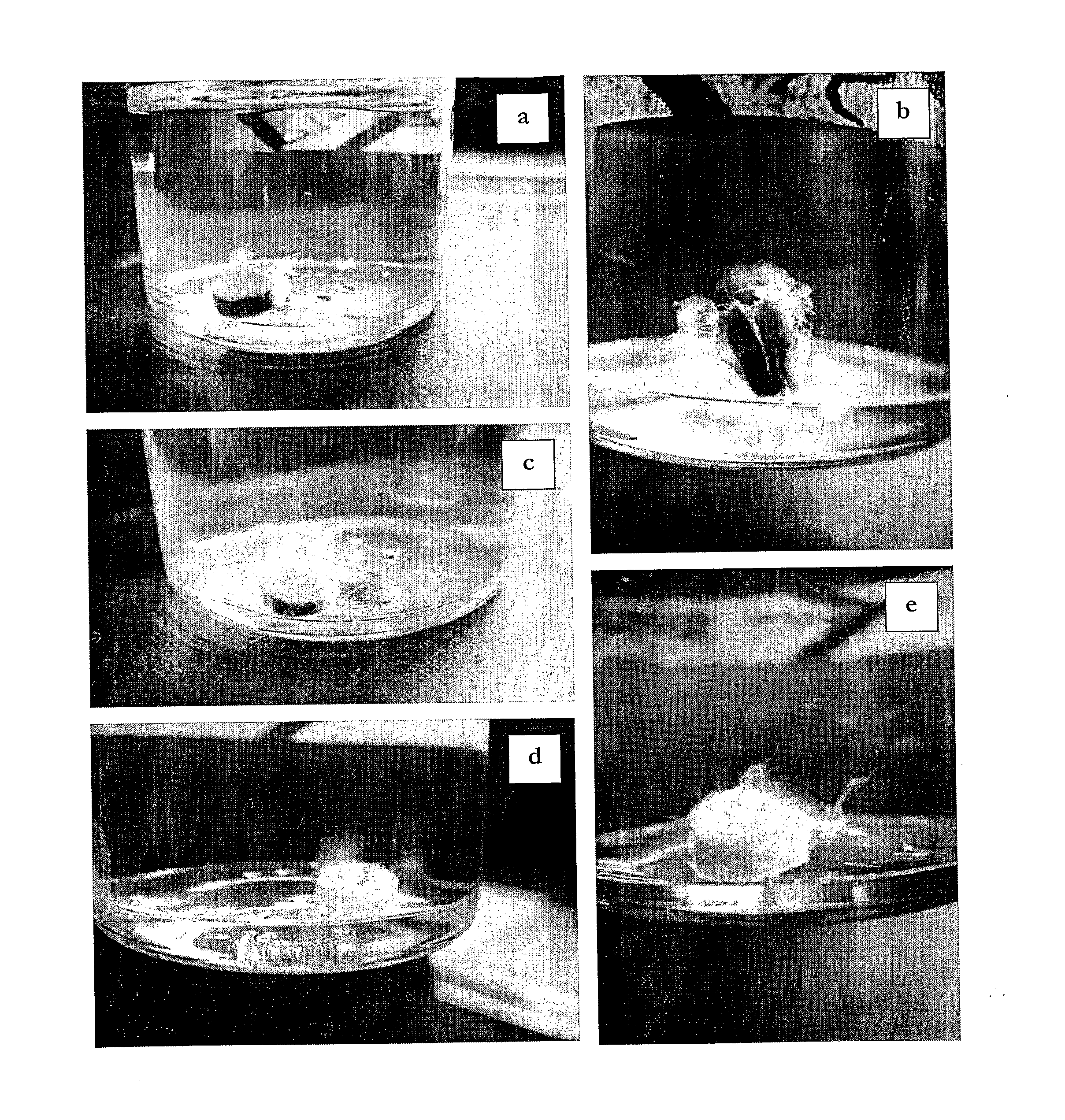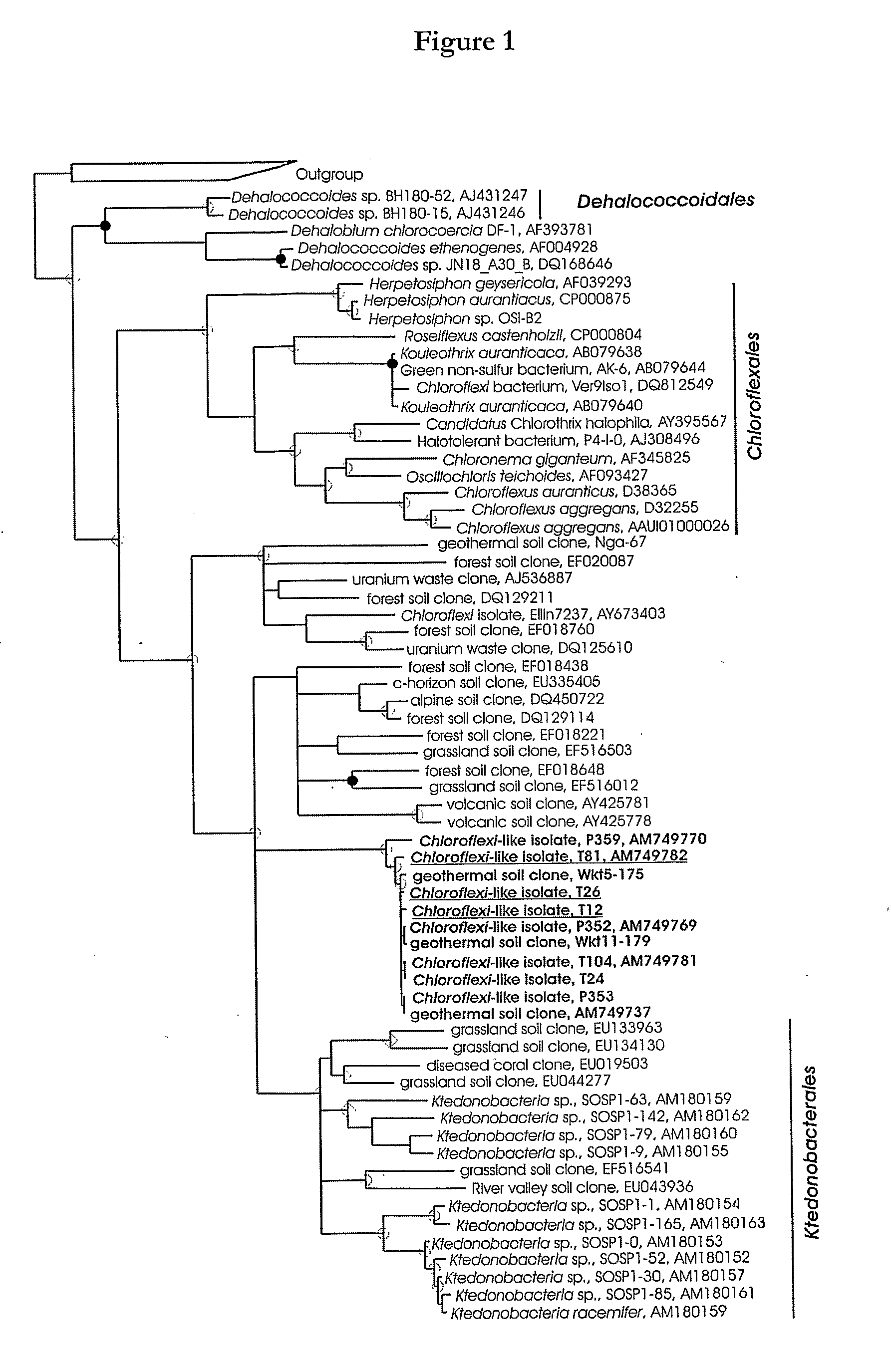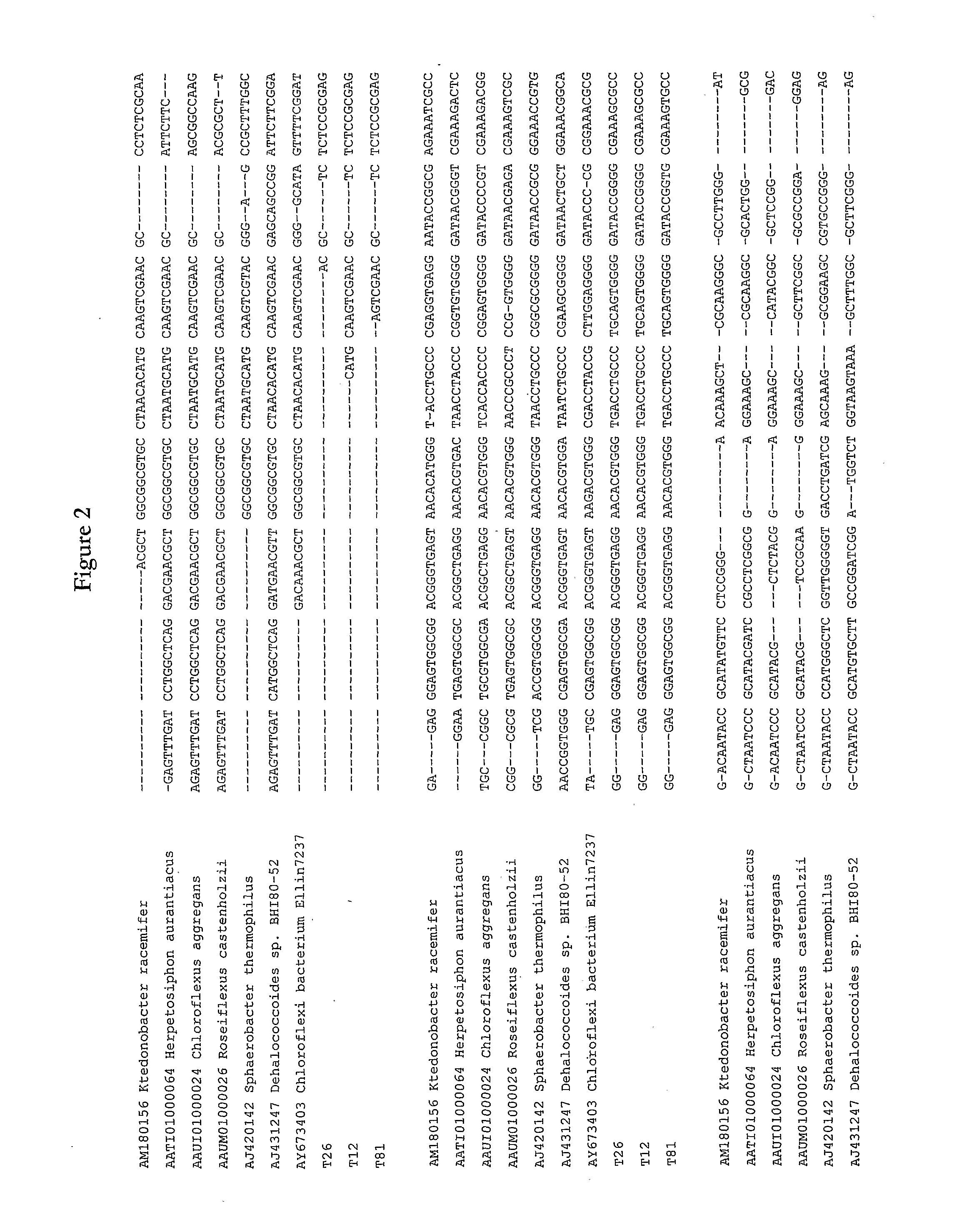New class of chloroflexi-like thermophilic cellulose degrading bacteria
a thermophilic cellulose and chloroflexi-like technology, applied in the field of new thermophilic cellulose degrading bacteria, can solve the problems of limited number of thermophilic cellulose degrading microorganisms, the most expensive and difficult to efficiently carry out step 2, and the inability to fully absorb cellulos
- Summary
- Abstract
- Description
- Claims
- Application Information
AI Technical Summary
Benefits of technology
Problems solved by technology
Method used
Image
Examples
example 1
Isolation and Characterisation of Chloroflexi-Like Isolates T81, T26 and T12
Materials and Methods
[0126]Strains T81, T26 and T12 were obtained from volcanic soil obtained from Tikitere geothermal field at Hell's Gate in the Taupo Volcanic Zone in the North Island of New Zealand.
[0127]Tikitere is a geothermal area of neutral chloride waters (pH 7.2) rich in dihydrogen gas, methane and ammonia. Geothermal features in the Hell's Gate tourist park include mud volcanoes, hot springs, fumaroles and steaming soil. An area of soil covered by low shrubs that had recently died due to the onset of steam venting through the soil was selected. There was a steep temperature gradient through the vertical soil structure, which consisted of an undecomposed organic horizon (0-2 cm, 31° C. at 1 cm), an A horizon (2-5 cm, 42° C. at 3.5 cm), an iron-rich horizon (5-10 cm, 53° C. at 7.5 cm), black ash (10-15 cm, 63° C. at 12.5 cm) and white ash and pumice (below 15 cm, 71° C. at 17.5 cm).
[0128]Samples fro...
example 2
[0144]The ability of the Chloroflexi-like isolates to degrade cellulose was tested using a variation of a method as described by Lai et al., (2006), Talanta, 69: 68-72. Isolates were inoculated into sterile 50 mL AOM1 medium (pH 5.0) containing 0.6 g L−1 cellulose azure (Sigma, Supra, C1052) in place of Phytagel, and a headspace containing 2% v / v CO2 in air. Experiments were conducted in duplicate at 60° C. and shaking at 140 rpm. The degradation of cellulose was detected spectrographically by the release of the azure pigment from the cellulose azure at an optical density of 595 nm. Samples were taken aseptically at 24 hour intervals, centrifuged at 14,000 rpm to remove bacteria, prior to measuring optical density. Also included in the experiment were two sets of controls; one positive control to confirm cell viability (AOM1), and a non-inoculated negative control to account for non biological release of the azure pigment.
[0145]The utilization of cellulose by the Chloroflexi-like is...
example 3
Additional Characterization of Chloroflexus Strains
[0147]Further characterization of Chloroflexus strains was carried out to elucidate the ability of Chloroflexus strains to degrade cellulose and cellulose-based substrates as well as the potential of these strains to be used in the cellulose to ethanol conversion process. Three strains were selected for these analyses, T81, T26 and T12 as described above.
Materials and Methods
Growth Media
[0148]Mineral salts medium FS3V, FeEDTA, Trace elements solution and AOM1 medium were prepared as for Example 1. Energy sources were added to both media prior to autoclaving (0.5 g / L), except where noted, via syringe filter.
[0149]Solidified media was made by amending AOM1 or FS3V with 15 g / L of Phytagel® or 15 g / L of Phytagel® and 1 g / L MgSO4.7H2O respectively, prior to autoclaving.
[0150]Unless otherwise stated, the following growth conditions were used for all experiments; Chloroflexus strains were grown aerobically at 60° C. in capped 100 mL serum ...
PUM
 Login to View More
Login to View More Abstract
Description
Claims
Application Information
 Login to View More
Login to View More - Generate Ideas
- Intellectual Property
- Life Sciences
- Materials
- Tech Scout
- Unparalleled Data Quality
- Higher Quality Content
- 60% Fewer Hallucinations
Browse by: Latest US Patents, China's latest patents, Technical Efficacy Thesaurus, Application Domain, Technology Topic, Popular Technical Reports.
© 2025 PatSnap. All rights reserved.Legal|Privacy policy|Modern Slavery Act Transparency Statement|Sitemap|About US| Contact US: help@patsnap.com



